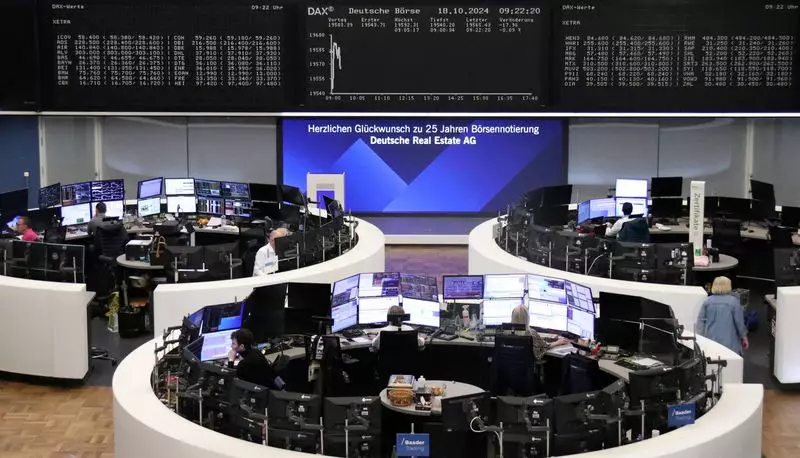The European stock market regained some footing on Friday as the STOXX 600 index rose by 0.2%, signaling a recovery from the previous week’s volatility. This positive movement primarily stemmed from a resurgence in technology stocks, which rebounded with a notable 2% increase. Despite this refreshing uplift, the tech sector has faced ongoing challenges throughout the week, culminating in a 6% loss, making it the worst-performing area of the index. Investors were particularly taken aback by ASML’s dismal projections for 2025 sales, which unleashed a ripple effect across global chip manufacturers.
On the bright side, ASML’s shares did slightly rebound, climbing by 1%, but other semiconductor-related stocks ultimately fared much better, with Soitec SA and BE Semiconductor Industries posting gains of 5.6% and 2.8%, respectively. In contrast, the basic resources sector saw a rise of 1.4%, buoyed by robust copper prices that indicate steady demand in underlying industries. The luxury goods sector, which experienced a downturn earlier in the week, also managed to lift itself. Following disappointing sales reports from LVMH, the luxury index bounced back with a 1.1% increase, led by strong performances from brands like Kering and Hermes, which saw rises of 3.5% and 1% respectively. Notably, Brunello Cucinelli’s stock climbed by 2.6% after the Italian brand showcased strong revenue growth in its nine-month performance report.
The European Central Bank’s decision to trim interest rates to 3.25% has resonated through various sectors, particularly as speculation mounts regarding further cuts in December, contingent on forthcoming economic data. This proactive monetary policy aims to ease some economic pressures faced by businesses and households alike. However, the outlook remains bleak, with Goldman Sachs recently revising its 2024 earnings forecasts for the STOXX 600 to a meager 2%. This downgrade has been attributed to rising corporate taxes and impending trade tariffs that threaten to stifle growth just as European markets begin to gain traction.
Despite the gains seen in the European stock market, concerns linger regarding the continent’s growing economic vulnerabilities, especially relative to the U.S. market. Daniel Murray, from EFGAM, identifies that Europe’s economic landscape appears more fragile, with slower growth trends and pronounced risks that could derail recovery efforts. Following sluggish performance metrics, this assessment underscores investor hesitance, despite favorable valuations when compared to U.S. equities.
The week has not been without its misfortunes either, as notable companies like Elisa and Getinge recorded steep losses of 4.7% and 5%, respectively, after disappointing quarterly earnings. These declines serve as a reminder of the precarious nature of market corrections, even amidst an optimistic bounce-back. Overall, while the STOXX 600 shows flickers of resilience, deep-seated economic challenges may continue to obstruct its path to sustained growth.


Leave a Reply